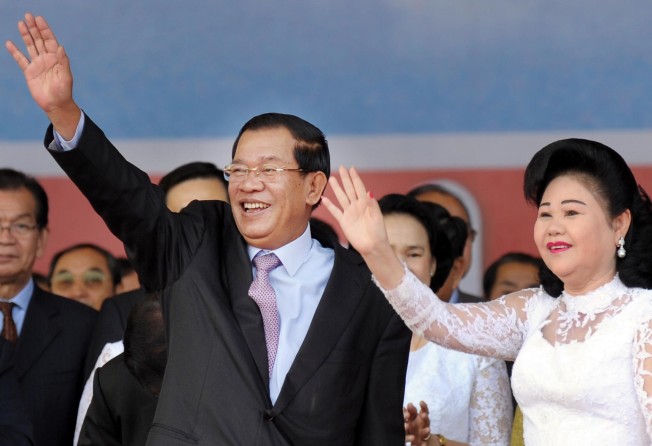by Sebastian Strangio
Yale University Press/
Silkworm Books




Unsurprisingly, most of the literature on Cambodia focuses on the horrors of the Khmer Rouge era. It's as if the country's history ended abruptly with the fall of Pol Pot in 1979, even as investment flows in from China and Taiwan, as well as South Korea and Japan, while a thriving garment industry is helping the economy grow at more than seven per cent annually. Yet, little has been written about how much the country has changed in the past 20-odd years.
Australian journalist Sebastian Strangio, who has lived in Cambodia since 2008, aims to change that with Hun Sen's Cambodia, the first comprehensive account of the country in the years since Vietnam invaded in 1978 to bring an end to Pol Pot's reign of terror. At the centre of the story is its prime minister, Hun Sen, first appointed in 1985 and now one of the world's longest-serving leaders.
Strangio doesn't pull any punches as he details the key events of the past two decades, while adroitly weaving in Hun Sen's transformation from a former Khmer Rouge commander to the ruthless strongman whose ruling Cambodian People's Party (CPP) has a stranglehold on power.
What emerges is just how much of a political animal Hun Sen is, a man adept at outmanoeuvring both his domestic opponents and the international community. Billions of dollars of aid have poured into Cambodia since the UN launched what was then its biggest ever mission in the country in 1992, but Hun Sen has continued to eliminate political rivals, critical journalists, and local environmental and human rights activists.
Nor have the lives of ordinary Cambodians improved significantly. The streets of the capital, Phnom Penh, may be jammed with new cars, but one-third of the population still lacks access to clean water. Land grabs have seen 10 per cent of the city's residents forcibly evicted from their homes, while huge tracts of the countryside have been handed over to CPP cronies for logging and sugar plantations.
For Strangio, Hun Sen's Cambodia is built on an intricate web of patronage that has enabled a small elite to prosper, while the outside world continues to cling to the idea that the country is moving towards genuine democracy. He describes this dichotomy memorably as the "Mirage on the Mekong".
There are few revelations in the book, which is written in workmanlike, sometimes slapdash, prose. Strangio could have made more of the 2013 elections, which saw dramatic gains for the opposition as the youthful population - one in three Cambodians are under 30 - expressed their dissatisfaction with Hun Sen's domination.
But this is still a well-researched and valuable narrative of a fast-changing country and essential reading for anyone interested in Cambodia's recent history.